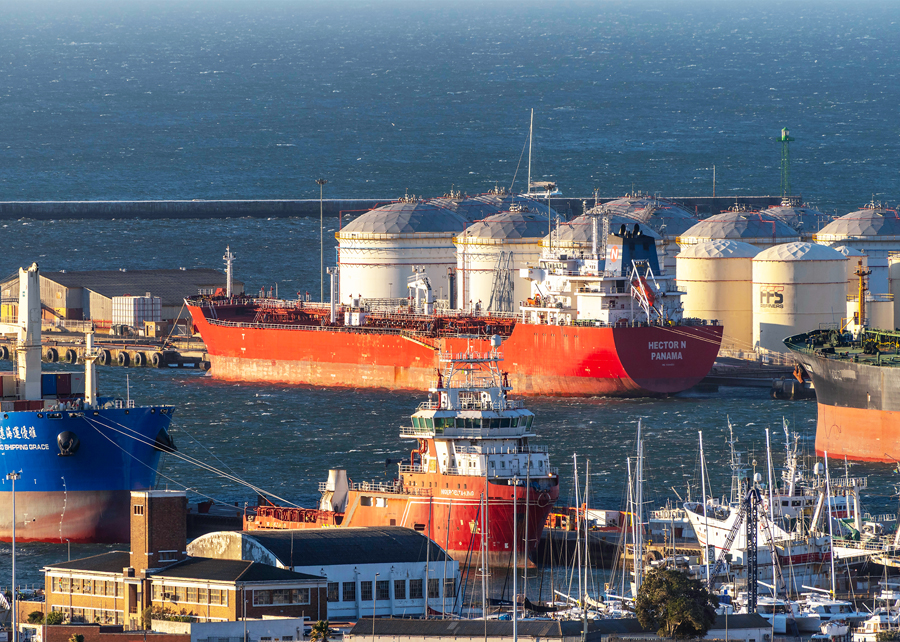Africa’s $375 Billion Opportunity: How the Continent is on the Cusp on an Energy Transformation
11 November 2025Doha: 12th of November 2025
Africa stands at the threshold of a historic energy transformation — one in which the Middle East will play a defining role.
Africa stands at the threshold of a historic energy transformation — one in which the Middle East will play a defining role. With vast untapped reserves, surging demand from Europe, and billions in potential investment, the continent’s natural gas could become the bridge between today’s fossil economy and tomorrow’s low-carbon future. Yet, as the Al-Attiyah Foundation’s latest research warns, the race is on — and the window for decisive action is closing fast.
The Foundation’s latest Energy Research Paper titled ‘Fuelling Africa’s Future: The Role of Natural Gas in Economic Growth and Energy Transformation,’ found that Africa holds 13 trillion cubic metres (TCM) of proven natural gas reserves, led by Nigeria (5.5 TCM), Algeria (18% of continental reserves), and Mozambique. Together, these nations anchor a continental gas map now expanding rapidly east and west, with Tanzania, Mauritania, and Senegal emerging as new entrants in offshore exploration. Turning these reserves into reality, however, demands monumental investment — an estimated US $375 billion by 2030 to unlock roughly 90 billion cubic metres (BCM) of production per year.
The report underscores the strategic role of Gulf energy leaders such as Qatar, the UAE, and Saudi Arabia in this transformation. Building on their deep expertise in LNG and global energy markets, these nations are partnering with African producers to accelerate infrastructure development, enhance financing access, and foster technology transfer. Qatar, in particular — one of the world’s top LNG exporters — serves as both a model and a potential partner in helping African nations establish resilient, competitive gas industries. In 2024 alone, companies from GCC states announced 73 foreign direct investment projects in Africa worth more than US $53 billion, signalling a decisive expansion of Gulf engagement across the continent’s energy and infrastructure sectors.
Demand from Europe, following the Russia–Ukraine conflict, has catalysed new opportunities but also exposed deep infrastructure gaps. Africa currently exports 37 million tonnes of LNG and 44 BCM per year via pipeline, yet logistical bottlenecks, security concerns, and financing shortfalls constrain growth. Projects like Mozambique LNG, Nigeria’s NLNG Train 7, and Senegal–Mauritania’s Greater Tortue Ahmeyim (GTA) field show what’s possible — if international finance and governance reforms align.
To attract the necessary capital, coordinated reforms such as predictable taxation, transparent regulation, and stronger utility creditworthiness are required. Participation from export credit agencies (ECAs), multilateral development banks (MDBs), and new vehicles such as the Africa Energy Bank (AEB) — a joint initiative of Afreximbank and the African Petroleum Producers’ Organisation, launched with an initial US $5 billion in 2024–25 — will also be essential. Without these de-risking mechanisms, the report cautions, many projects may stall before reaching final investment decision (FID).
Beyond exports, gas is critical in powering industrialisation and energy access across the continent. Africa could replace up to 100 GW of diesel generation with gas-fired and hybrid systems, cutting emissions while improving urban reliability. Nations like Nigeria and Egypt already demonstrate how domestic gas use can drive growth, while countries such as Ghana and South Africa explore hybrid gas-renewables grids to stabilise their power networks.
Africa’s gas future will be shaped by a “race for scale,” where only a few competitive hubs — such as Nigeria, Egypt, Mozambique, and Senegal–Mauritania — may emerge as true global LNG leaders. Whether the continent can seize this opportunity depends on political will, investor confidence, and the ability to balance export ambitions with domestic development.
To read Fuelling Africa’s Future: The Role of Natural Gas in Economic Growth and Energy Transformation and other Foundation publications, visit abhafoundation.org.
